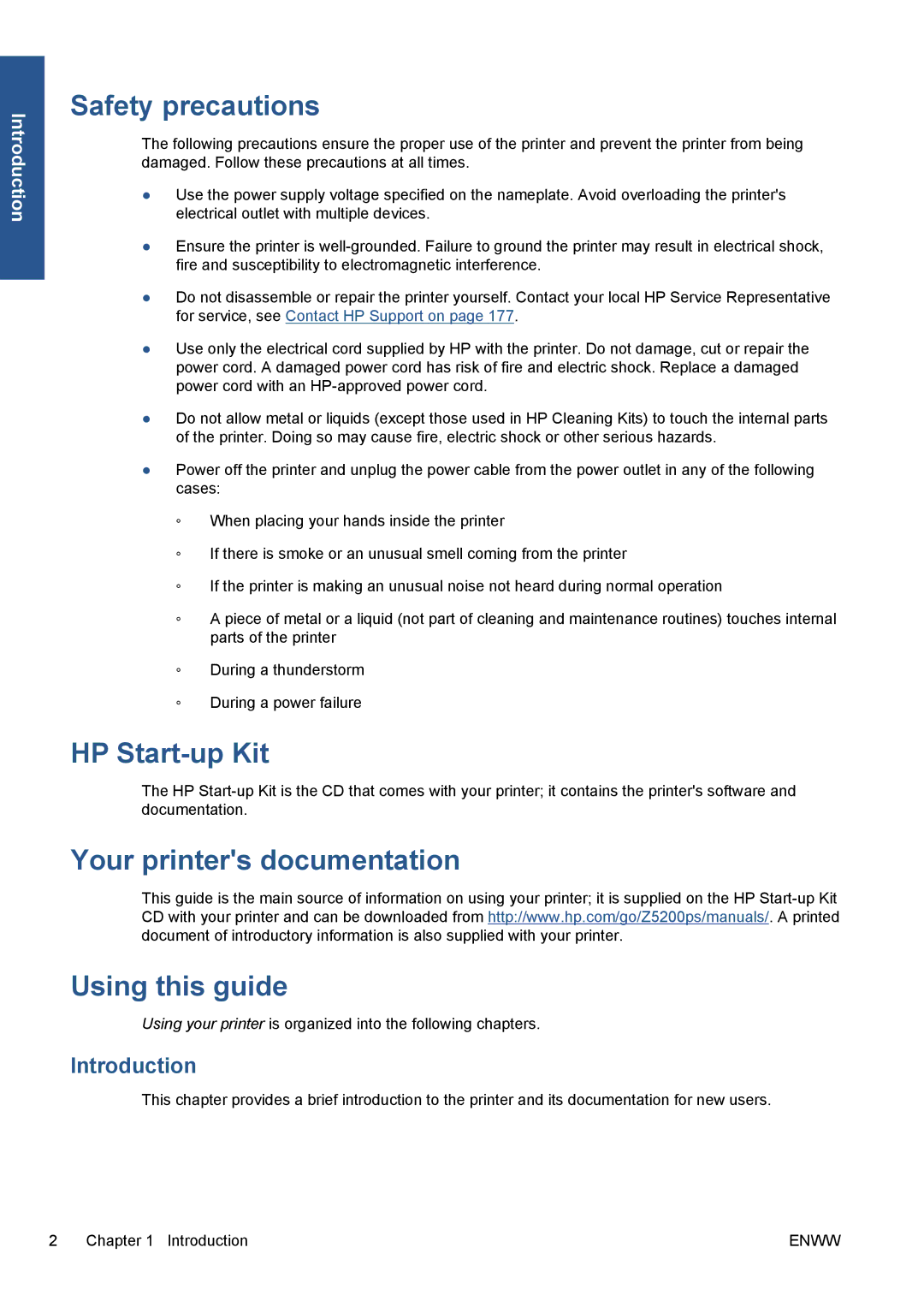
Introduction
Safety precautions
The following precautions ensure the proper use of the printer and prevent the printer from being damaged. Follow these precautions at all times.
●Use the power supply voltage specified on the nameplate. Avoid overloading the printer's electrical outlet with multiple devices.
●Ensure the printer is
●Do not disassemble or repair the printer yourself. Contact your local HP Service Representative for service, see Contact HP Support on page 177.
●Use only the electrical cord supplied by HP with the printer. Do not damage, cut or repair the power cord. A damaged power cord has risk of fire and electric shock. Replace a damaged power cord with an
●Do not allow metal or liquids (except those used in HP Cleaning Kits) to touch the internal parts of the printer. Doing so may cause fire, electric shock or other serious hazards.
●Power off the printer and unplug the power cable from the power outlet in any of the following cases:
◦When placing your hands inside the printer
◦If there is smoke or an unusual smell coming from the printer
◦If the printer is making an unusual noise not heard during normal operation
◦A piece of metal or a liquid (not part of cleaning and maintenance routines) touches internal parts of the printer
◦During a thunderstorm
◦During a power failure
HP Start-up Kit
The HP
Your printer's documentation
This guide is the main source of information on using your printer; it is supplied on the HP
Using this guide
Using your printer is organized into the following chapters.
Introduction
This chapter provides a brief introduction to the printer and its documentation for new users.
2 Chapter 1 Introduction | ENWW |
